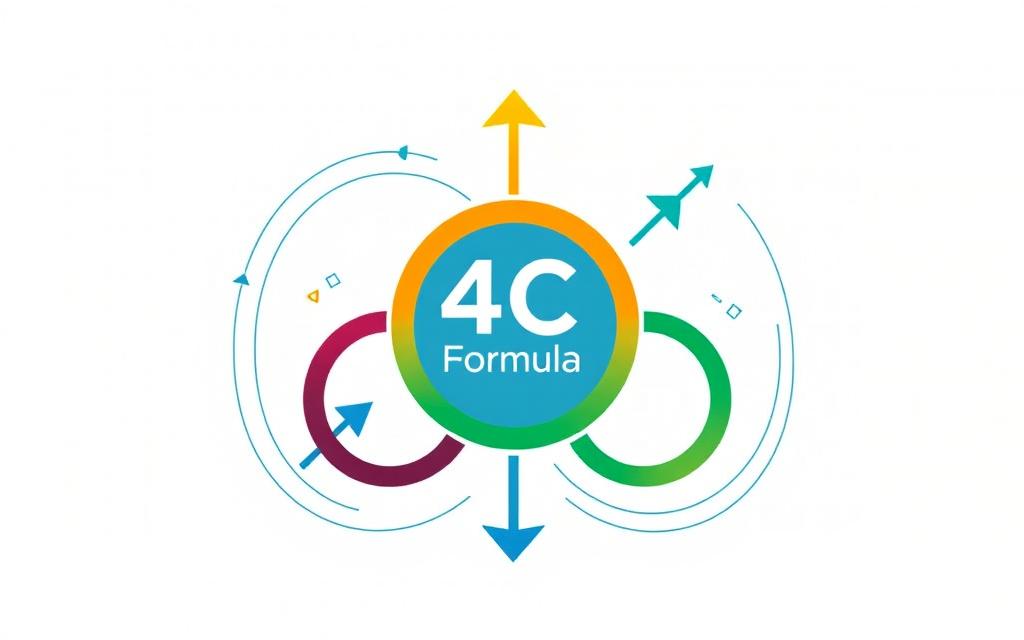Did you know over 70% of people feel like they’re not good enough, even when they’ve achieved a lot? This shows how common self-doubt is among high achievers. But what if “fake it till you make it” could be the key to beating this feeling and reaching success?
I’ve tried this approach, and it changed everything. By acting confident and competent, even when I wasn’t sure, I discovered my true potential. This method is all about believing in yourself and making that belief come true.
In this article, we’ll explore “fake it till you make it” in detail. We’ll see how it can help you feel more confident, resilient, and determined on your path to success. We’ll talk about different ways to “fake it,” when it’s right, and how making a public promise can help you move forward. Get ready to discover the power of this simple yet powerful mindset shift!
What Does It Mean to “Fake It ‘Till You Make It”?
The phrase “fake it till you make it” is a common saying for personal and professional growth. But what does it mean to “fake it”? People try different ways to put this strategy into action:
Three Different Ways to Fake It
- Acting as if they already have the qualities, skills, or confidence they want. By behaving as if they’re an expert or a leader, they aim to become those traits.
- Nodding and smiling to seem engaged and understanding, even when they’re lost or unsure. This helps them save face and avoid admitting imposter syndrome.
- Pretending that everything is fine when they’re really struggling. They may act brave to meet expectations or avoid asking for assistance.
These tactics can give a short-term confidence boost. But, they can also lead to bigger problems later. Relying too much on “faking it” can make it hard to develop real competencies and manage true expectations.
When Not to Fake It
In some situations, faking it is not a good idea and can cause more harm. For instance, being honest about your skills and knowledge is crucial. Pretending to have abilities you don’t have can hurt your credibility and make getting support harder. It’s also important to be clear about what you know (or don’t know) to avoid mistakes.
Finding the right balance between faking it and being real is key to “making it” in the long run.
The Power of a Public Commitment
Making a public commitment can change the game when it comes to reaching our goals and dreams. The idea of “fake it till you make it” uses the power of public accountability. By sharing our goals, we feel a strong sense of responsibility that pushes us forward.
Studies show that people who share their goals publicly are more likely to stick with them and succeed. Our brains respond to social pressure and the need to look good to others. When we share our goals, we feel a stronger urge to follow through on our promises.
“A public commitment creates a self-fulfilling prophecy, where our words and actions align to manifest the desired outcome.”
The strength of a public commitment comes from the accountability it brings. Knowing others are watching and expecting us to succeed motivates us. It helps us overcome doubts and stay focused.
Sharing your goals on social media, telling your network about a new business, or sharing your dreams with a friend can make a big difference. It’s a simple way to boost your chances of success. It uses the power of accountability to make your dreams come true.
| Benefits of a Public Commitment | Drawbacks to Consider |
|---|---|
|
|
The true power of a public commitment is in making our dreams real. Using accountability and the self-fulfilling prophecy helps us reach our full potential. It leads us to make big steps towards our goals.
Cautionary Tales: When Faking It Goes Too Far
Some have taken the “fake it till you make it” approach to extreme and unethical levels. This has led to disastrous outcomes. High-profile cases like Elizabeth Holmes of Theranos and Samuel Bankman-Fried of FTX show us the dangers. They faked their abilities and made false claims, leading to their companies and reputations crumbling.
Elizabeth Holmes, the founder of Theranos, wowed the world with her bold vision. She promised to change healthcare. But, her technology didn’t work, and she lied and cheated to keep up appearances. Her story teaches us that innovation must be honest and real.
Samuel Bankman-Fried, the former CEO of FTX, seemed like a tech genius and a giver. But, he was caught running a Ponzi scheme. This hurt investors and customers, showing the risks of ambition without ethics.
| Case | Faking It | Consequences |
|---|---|---|
| Elizabeth Holmes (Theranos) | Exaggerated claims about the company’s blood testing technology | Theranos shut down, Holmes convicted of fraud |
| Samuel Bankman-Fried (FTX) | Misused customer funds, ran a Ponzi scheme | FTX collapsed, Bankman-Fried facing criminal charges |
These stories show us the value of honesty and integrity in success. “Fake it till you make it” can be risky and may destroy your reputation. The stories of Theranos and FTX remind us that lasting success comes from being truthful and ethical.
“The greatest trick the devil ever pulled was convincing the world he didn’t exist.”
fake it until you make it

“Fake it till you make it” might sound unclear, but the 4C Formula offers a clear plan for growth. It breaks down into four steps, making “faking it” a real strategy for success.
The 4C Formula: A Structured Approach
The 4C Formula has four main parts: Commitment, Courage, Capability, and Confidence. This method guides you from pretending to achieving real success.
- Commitment: Start with a bold goal, even if it seems too hard.
- Courage: Overcome your fears and take bold steps to move forward.
- Capability: Learn the skills you need to make your dreams come true.
- Confidence: Gain confidence from your successes and feel sure of yourself.
Using the 4C Formula, you can turn “faking it” into a real journey to success. It’s built on commitment, courage, capability, and confidence.
“The secret of getting ahead is getting started.” – Mark Twain
Visualizing Success: The Law of Attraction
Exploring “faking it till you make it” leads us to the law of attraction and the self-fulfilling prophecy. These ideas say our thoughts, attitudes, and beliefs shape our reality. They bring either good or bad experiences into our lives.
By visualizing and acting as if we’ve reached our goals, we might make those outcomes real with our positive mindset and actions. This is the law of attraction at work. Our thoughts and vibrations act like magnets, pulling in what we focus on.
The self-fulfilling prophecy also backs this idea. It says our expectations, whether we’re aware of them or not, can shape the results we get. When we believe and act like we’ll succeed, we often do what’s needed to make it happen.
| Principle | Description | Example |
|---|---|---|
| Law of Attraction | Our thoughts and vibrations attract similar experiences into our lives. | Visualizing yourself as a successful entrepreneur and taking actions to make it happen. |
| Self-Fulfilling Prophecy | Our expectations, whether conscious or subconscious, can influence and create the outcomes we experience. | Believing you will ace an upcoming interview and then doing everything in your power to make that a reality. |
Using visualization and a positive mindset can unlock the power of these ideas. This can open up new possibilities and speed up our path to success.
“Whether you think you can, or you think you can’t – you’re right.” – Henry Ford
Walking the Line: Honesty vs. Pretending

In the world of “faking it till you make it,” finding a balance between honesty and pretending is key. It’s good to show confidence and believe in your future. But, lying about your past or achievements is a big no-no. The goal is to be truthful about your past and work towards a better future.
Time Orientation: Past vs. Future
How you view time is important. Being honest about your past and true in the present helps you look forward positively. Being real about your journey sets you up for real progress, not just pretending to be successful.
“The truth will set you free,” as they say. By facing the truth of your past, you can move forward better. This way, you build trust with others and keep your personal integrity strong. It’s very empowering.
| Honesty | Pretending |
|---|---|
| Authenticity in the present | Projecting confidence in the future |
| Truthfulness about the past | Lying about past achievements |
| Builds trust and integrity | Risks being perceived as fraud |
It’s all about finding a balance. Use a positive mindset for the future but stay real about now and what’s been. This way, you move towards success on a base of honesty and authenticity.
The Art of Overselling: Demos and Prototypes
In the world of entrepreneurship and technology, “faking it” often means overselling through demos and prototypes. Companies might show off working models or simulations to show what a product could be, even if it’s not fully ready yet. This method, called the “painted door” approach, helps check interest and get feedback before fully developing the product.
This strategy can be helpful, but it’s key to be clear and not mislead people about the product’s current state. Overselling can cause disappointment and damage trust if customers feel they were tricked. Finding the right balance between excitement and honesty is crucial.
To get it right, product managers should think about these strategies:
- Clearly Communicate Limitations – Be clear about what the demo or prototype can and can’t do. Set realistic expectations and don’t exaggerate its abilities.
- Gather Targeted Feedback – Use demos or prototypes to get valuable insights from potential customers. This feedback can help shape the product’s future.
- Prioritize Transparency – Keep an open conversation about the product’s progress and timeline. Don’t oversell features that aren’t ready or might change later.
Overselling through demos and prototypes needs a careful touch. By balancing excitement with honesty, entrepreneurs and product managers can spark interest and build trust. This leads to a better product launch.
| Metric | Overselling | Balanced Approach |
|---|---|---|
| Customer Satisfaction | Low – Customers feel misled and disappointed | High – Customers appreciate the transparency and feel their feedback is valued |
| Product Adoption | Moderate – Initial interest, but slower long-term growth | High – Customers trust the product and are more willing to invest in it |
| Brand Reputation | Damaged – Perceived as untrustworthy and deceptive | Strengthened – Viewed as transparent and customer-centric |
Mastering the art of overselling through demos and prototypes helps entrepreneurs and product managers balance excitement with honesty. This method can be a strong tool for success, but it must be used with care and integrity.
Balancing Confidence and Capability
Success often means finding a balance between confidence and capability. Having a positive mindset is good, but it’s key to make sure your actions match your confidence. Sadly, stories show what happens when this balance is off.
When Faking It Backfires
The Nikola electric truck scandal shows the dangers of faking your skills or making false claims. This event highlights the need for honesty and openness. The company faced quick backlash and lost trust from the public. The “fake it till you make it” strategy only works if you keep improving your skills and knowledge.
“It’s not about faking it, but about continually improving and aligning your abilities with your confidence.”
On your path to designing the life you want, remember that real confidence comes from knowing your strengths and limits. Stay true to yourself and keep improving your capabilities. This way, you can handle challenges and opportunities with grace and honesty.
Conclusion
“Faking it till you make it” is a powerful mindset shift. It may seem odd at first, but it can really help us grow. By building confidence, capability, and commitment, we can achieve amazing things.
The summary of our journey shows us how to use this approach wisely. We make public promises, imagine ourselves succeeding, and follow a 4C Formula. This includes Commitment, Courage, Capability, and Confidence. This way, we gain from it without being fake or feeling like an imposter. It’s about being confident but also working hard to be truly skilled.
The key takeaways are easy but deep: Be brave and start, even if you’re not sure at first. Trust that you can improve and change. And always stay true to being honest and open, as that’s where real success comes from.

